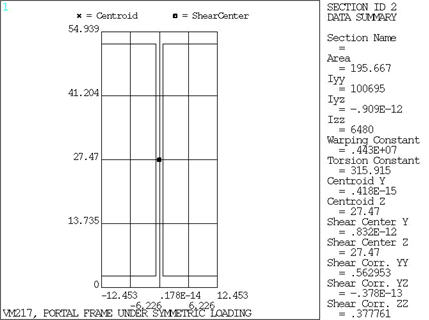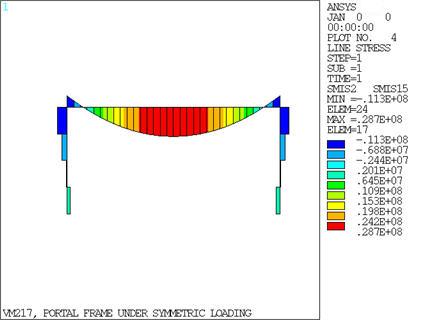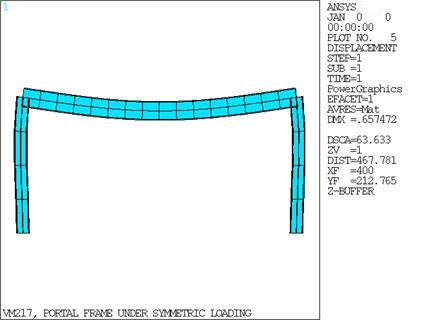VM217
VM217
Portal Frame Under Symmetric Loading
Test Case
A rigid rectangular frame is subjected to a uniform distributed load ω
across the span. Determine the maximum rotation, and maximum bending moment.
The moment of inertia for the span, Ispan is five
times the moment of inertia for the columns, Icol.
Analysis Assumptions and Modeling Notes
All the members of the frame are modeled using an I-Beam cross section.
The cross section for the columns is chosen to be a W36 x 300 I-Beam Section.
The dimensions used in the horizontal span are scaled by a factor of 1.49535
to produce a moment of inertia that is five times the moment of inertia in
the columns. The columns are modeled with BEAM188,
while the span is modeled with BEAM189 elements.
The theoretical maximum rotation is β =(1/27) (w(a3)/E(Icol)),
and the theoretical maximum bend moment is Mmax = (19/54)(w(a2)).






